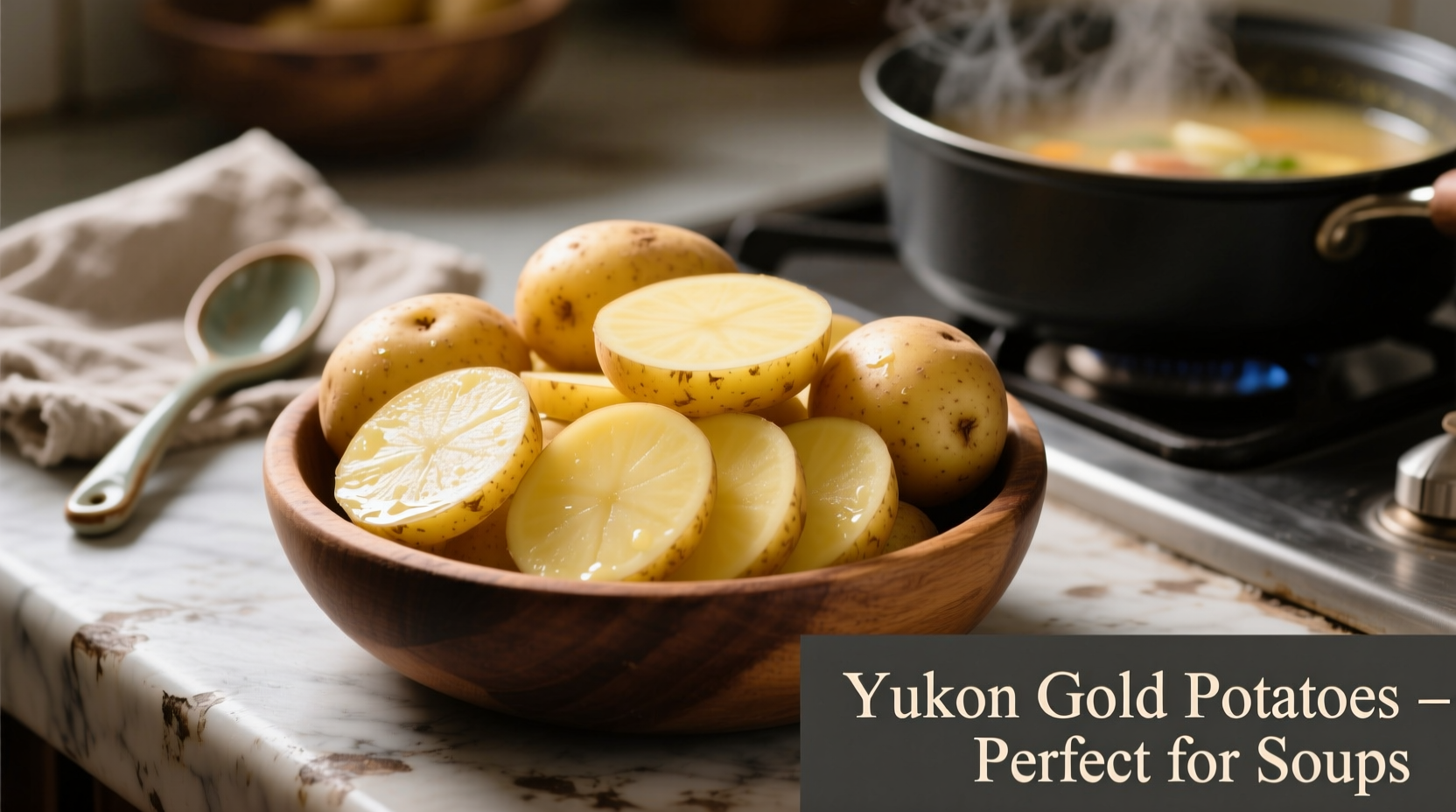When crafting the perfect potato leek soup, your potato selection makes or breaks the final dish. Many home cooks unknowingly sabotage their soup with the wrong variety, resulting in either a gluey mess or soup with unpleasantly firm chunks. Understanding potato starch content and texture properties transforms your soup from ordinary to extraordinary with minimal extra effort.
Why Potato Selection Matters for Soup Texture
Potato leek soup requires a delicate balance: enough breakdown to create creaminess without becoming gluey or losing all structural integrity. The starch content of your potatoes directly impacts this balance. Potatoes fall into three main categories based on starch content:
- Starchy potatoes (like Russets) break down completely, creating thickening but risking graininess
- Waxy potatoes (like reds) maintain shape but won't thicken your soup properly
- All-purpose potatoes (like Yukon Golds) offer the ideal middle ground
Professional chefs consistently reach for Yukon Golds because their medium starch content (15-18%) provides natural creaminess while maintaining enough structure to prevent a pasty texture. The buttery flavor of Yukon Golds also complements the delicate leeks without overpowering them.
| Potato Variety | Starch Content | Texture in Soup | Flavor Profile | Best Used When |
|---|---|---|---|---|
| Yukon Gold | Medium (15-18%) | Creamy with slight texture | Buttery, rich | Standard preparation |
| Russet | High (20-22%) | Fully breaks down | Earthy, neutral | Need extra thickness |
| Red Potatoes | Low (12-14%) | Holds shape completely | Mild, slightly sweet | Chunky soup desired |
| Fingerling | Low-Medium (13-16%) | Firm with creamy interior | Nutty, complex | Elevated presentation |
Top Potato Recommendations for Perfect Soup
1. Yukon Gold: The Gold Standard
Yukon Gold potatoes consistently rank as the best choice for traditional potato leek soup. Their naturally buttery flesh requires less added dairy while creating luxurious mouthfeel. When cooked properly, they release just enough starch to thicken the broth while maintaining subtle texture. The University of Maine's Cooperative Extension confirms that Yukon Golds contain ideal amylose-to-amylopectin ratios for soups, preventing the gummy texture that plagues many home attempts (UMaine Extension).

2. Russet: Strategic Thickening Agent
While not ideal as the sole potato, Russets serve as excellent thickening agents when combined with Yukon Golds. Use a 3:1 ratio of Yukon Gold to Russet for optimal results. The American Potato Board notes that Russets' high starch content (20-22%) makes them valuable thickeners but problematic as the primary ingredient in creamy soups (American Potato Board).
3. Red Potatoes: For Chunky Variations
Choose red potatoes only when specifically aiming for a chunkier soup with distinct potato pieces. Their low starch content (12-14%) prevents proper thickening but maintains attractive shape. Food scientists at Cornell University confirm that waxy potatoes like reds contain more amylose, which resists breakdown during cooking (Cornell CALS).
Common Potato Mistakes to Avoid
Even experienced cooks make critical errors when selecting potatoes for soup:
- Using only Russets - creates overly thick, potentially grainy soup
- Skipping the soak - rinsing cut potatoes removes excess surface starch
- Adding cold potatoes to hot broth - causes uneven cooking
- Overcooking - breaks down structure beyond recovery
Pro Preparation Techniques
Follow these chef-recommended steps for perfect potato integration:
- Peel and cut potatoes uniformly (3/4-inch cubes)
- Soak in cold water for 10 minutes to remove excess starch
- Add to simmering (not boiling) broth to prevent shattering
- Cook until just fork-tender (15-18 minutes)
- Reserve 1 cup of cooked potatoes before blending for texture
When to Break the Rules
Certain situations call for alternative potato approaches:
- Dairy-free version - Use 100% Yukon Golds for natural creaminess
- Chunky rustic style - Combine red potatoes with small Yukon Gold pieces
- Time-pressed cooking - Russets cook slightly faster but require careful monitoring
- Color variation - Purple potatoes add visual interest but require acid stabilization
Expert Troubleshooting Guide
Rescue your soup when potato issues arise:
- Too thin? - Simmer uncovered or add reserved cooked potato puree
- Too thick? - Gradually add warm broth or milk while stirring
- Grainy texture? - Blend with immersion blender and strain through fine mesh
- Uneven chunks? - Cut potatoes smaller next time and ensure uniform size
Seasonal Potato Availability Guide
Understanding potato seasonality ensures optimal flavor and texture:
- Spring/Summer - New potatoes work well for lighter, chunkier versions
- Fall/Winter - Mature storage potatoes (Yukon Golds) deliver best creamy results
- Year-round - Commercially stored potatoes maintain consistent quality











 浙公网安备
33010002000092号
浙公网安备
33010002000092号 浙B2-20120091-4
浙B2-20120091-4